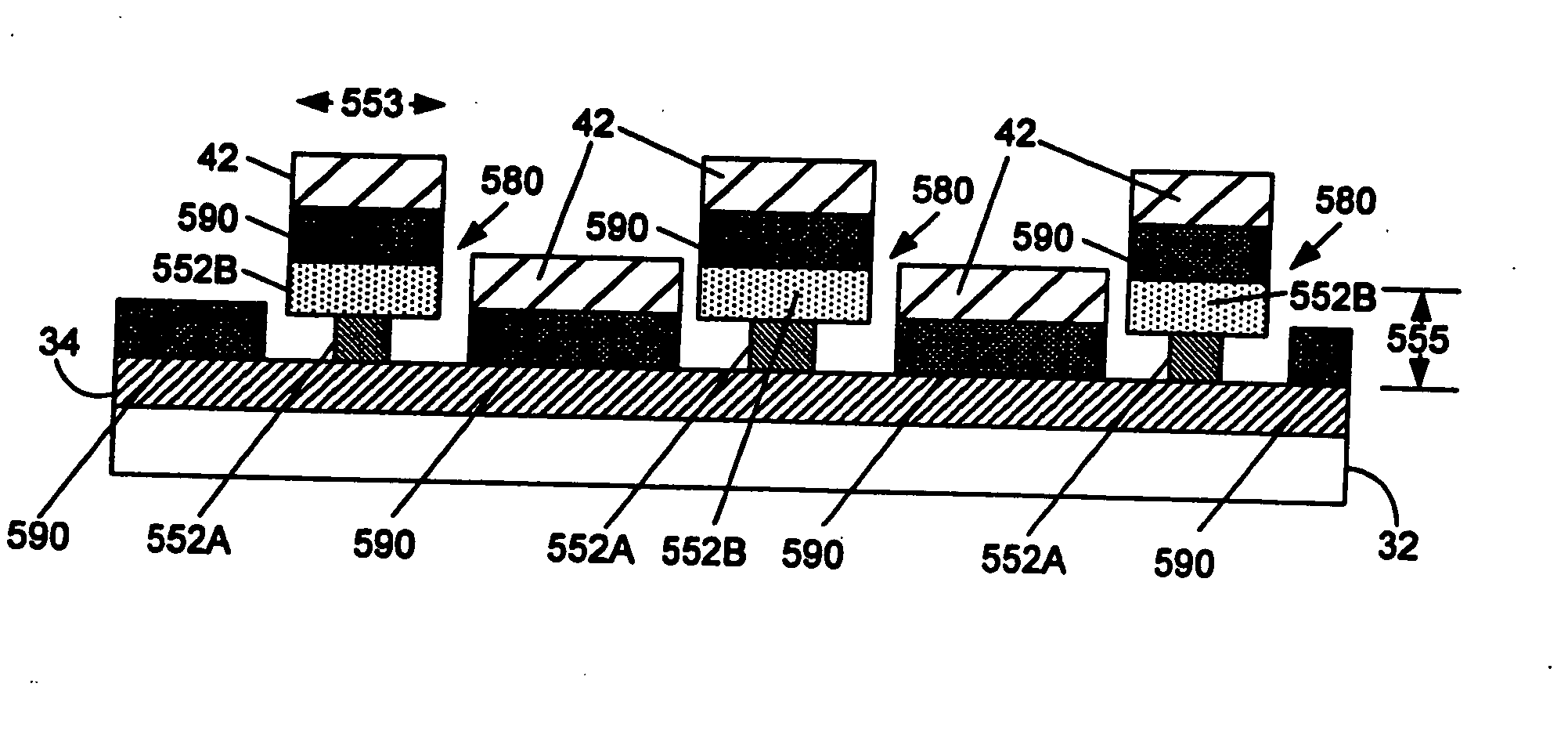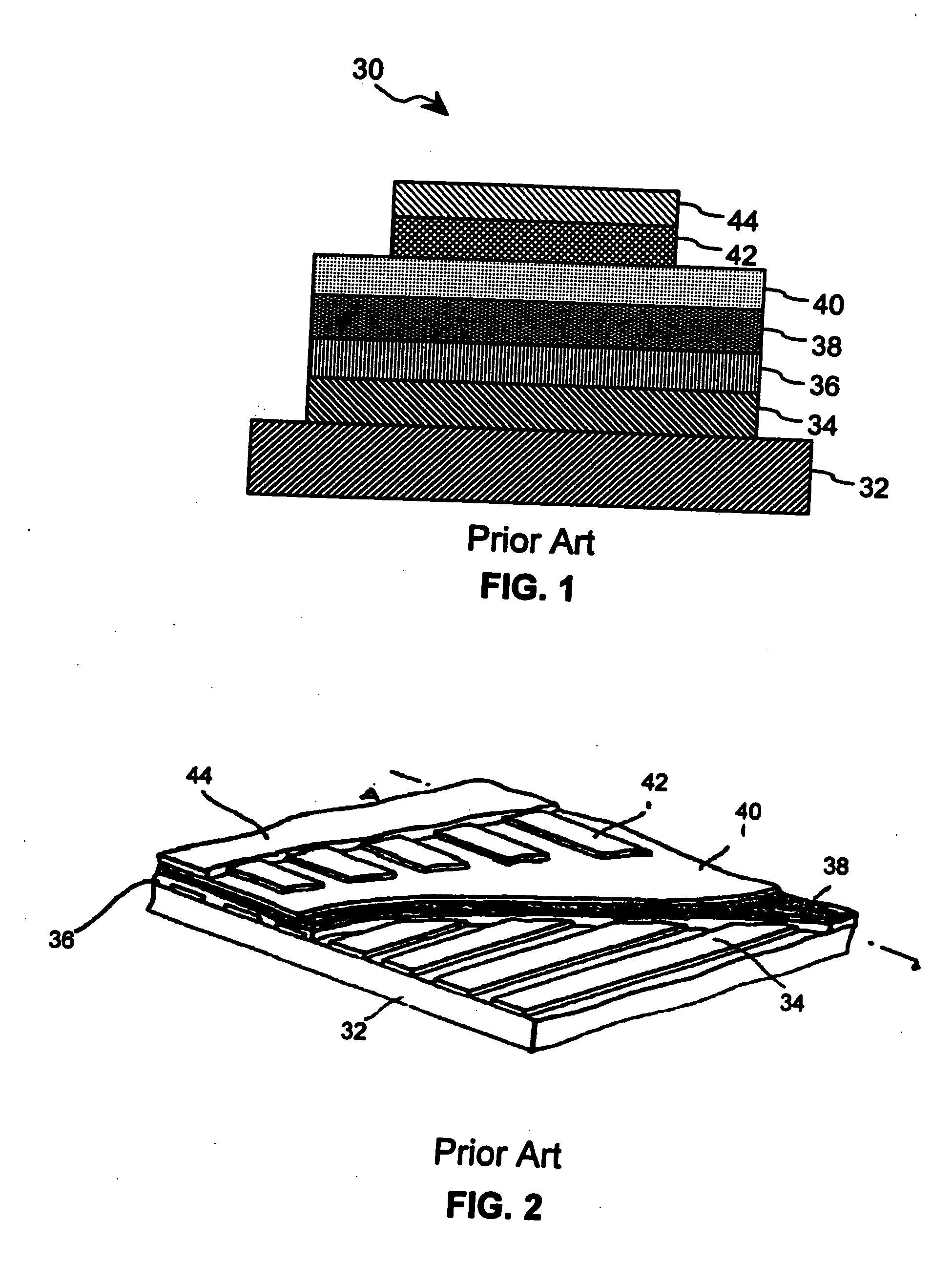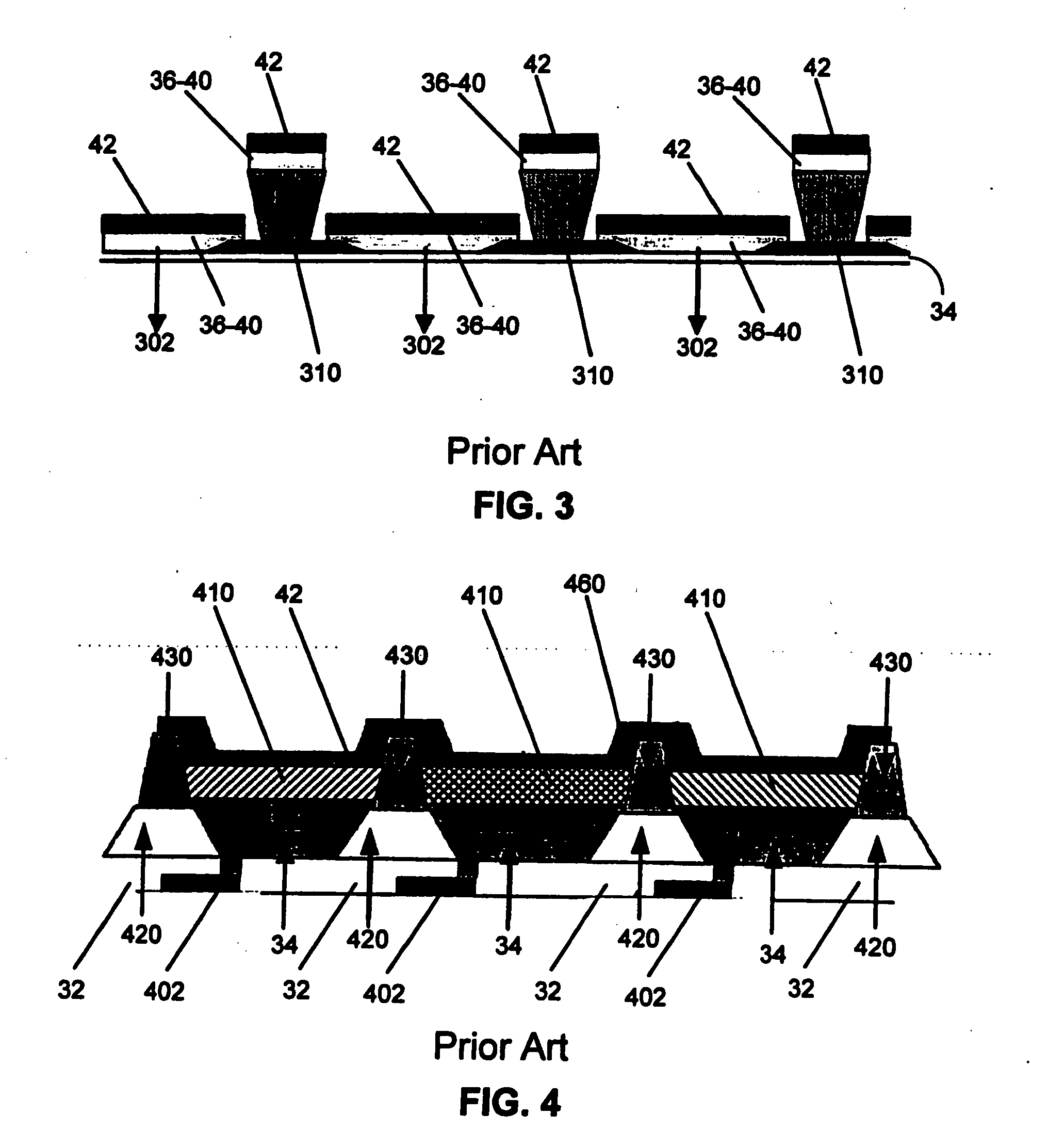Deposition of permanent polymer structures for OLED fabrication
- Summary
- Abstract
- Description
- Claims
- Application Information
AI Technical Summary
Benefits of technology
Problems solved by technology
Method used
Image
Examples
example 1
[0108] The following example illustrates the manufacture of a color isolation well as well as an undercut pillar. The combination of a color isolation well and an undercut pillar finds application in, for example, passive matrix color-based OLED displays. The structure produced by this example is illustrated in FIG. 8. Spin TOK OFPR 800-20 photoresist is coated on a silicon substrate using a CEE Model 100CB manual spin coater at a speed of 5000 rpm, for 20 seconds. The photoresist is baked on a hotplate at 230° C. for 1 minute. Next, precursor is spin coated on the device using a CEE spin coater at a speed of 5000 rpm for a period of 20 seconds. The precursor is exposed using an OAI deep ultraviolet contact aligner for a period of fifteen minutes with a power of 1.8 mJ / cm2. The precursor is then spin developed by a twenty second application of methyl isobutyl ketone:hexane:hexane (1:10) using a CEE spin coater at a speed of 500 rpm. Next, the precursor is post-developed using an ult...
example 2
[0109] The following example illustrates the manufacture of the undercut pillar illustrated in FIG. 6. A MicroChem XP LOR 10B (polyimide based lift-off layer) is spin coated onto a silicon substrate using a CEE Model 100CB manual spin coater at a speed of 5000 rpm for a period of 20 seconds. The LOR is baked on a hotplate at 230° C. for five minutes. Then, TOK OFPR 800-20 is spin coated onto the device using a CEE spin coater at a speed of 5000 rpm for a period of 20 seconds. The photoresist is baked on a hotplate at a temperature of 230° C. for one minute before precursor is spin coated onto the device using a CEE spin coater at a speed of 5000 rpm for 20 seconds. The precursor is exposed using an OAI deep ultraviolet contact aligner for a period of fifteen minutes with a power of 1.8 mJ / cm2. Next the precursor is spin developed by a twenty second application of methyl isobutyl ketone:hexane:hexane (1:10) using a CEE spin coater at a speed of 500 rpm. Next, the device is reactive i...
example 3
[0110] This example provides a general process for photochemical metal organic deposition (PMOD)-based fabrication of permanent polymer structures such as those described in Sections I and II of the present invention. First, the photochemical metal organic precursor compound(s) are isolate, and purified as necessary. Any of the materials disclosed in Section III of the invention, for example, can be used. Next, the photochemical metal organic precursor formulation is prepared by dissolving the isolated (and possibly purified) metal-organic precursor compound(s) in solvents appropriate for coating. The substrate (or temporary substrate) is coated with a pattern-transfer layer. The pattern-transfer layer is a material that will become the permanent polymer structure. The solvate metal-organic precursor formulation is then overlayed on the pattern-transfer layer and selectively exposed to ultraviolet radiation (at ambient or elevated temperature) initiating a photochemical reaction whe...
PUM
 Login to View More
Login to View More Abstract
Description
Claims
Application Information
 Login to View More
Login to View More - R&D
- Intellectual Property
- Life Sciences
- Materials
- Tech Scout
- Unparalleled Data Quality
- Higher Quality Content
- 60% Fewer Hallucinations
Browse by: Latest US Patents, China's latest patents, Technical Efficacy Thesaurus, Application Domain, Technology Topic, Popular Technical Reports.
© 2025 PatSnap. All rights reserved.Legal|Privacy policy|Modern Slavery Act Transparency Statement|Sitemap|About US| Contact US: help@patsnap.com



